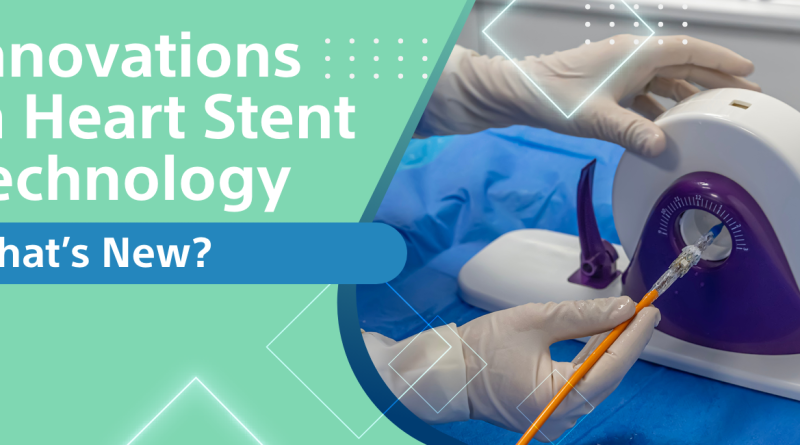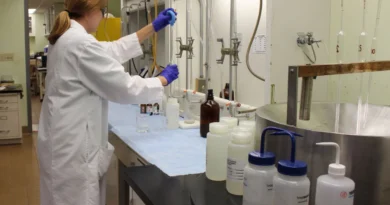Innovations in Heart Stent Technology: What’s New?
The technology used in the stents in recent years has improved significantly and has new hope for patients suffering from cardiovascular diseases. These are used in treating blocked arteries and enhancing blood flow to the heart to ensure it functions as required. The changes in the heart stent types have brought significant changes in the treatment process and have turned various medical procedures into safer and more efficient methods. The following article aims to discuss the newest developments in heart stent technologies, understand the types of stents, and explain why they might be considered the best option for heart patients.
Evolution of Heart Stent Technology
Heart stents have developed over the years since the first devices were invented. At first, the stents were just metal tubes that were placed in the arteries to make it possible to expand them. However, these early products had shortcomings; one major disadvantage was that the stents could end up causing restenosis, in which the artery would block up again at some point in the future. It resulted in the creation of drug eluting stents (DES), which release medication intended to prevent restenosis. There were many problems in the form of earlier models, and the differentiation in the heart stent types available has now been resolved.
The Best Stent for Heart: What to Consider?
There are several factors that patients and doctors must consider when deciding which type of stent is best for their patients. These factors will include the patient’s medical history, the nature of the blockage, the consequences of different stent options, and other relevant factors. Devices like drug-eluting stents have been widely used because self-developed technology can help reduce the restenosis rates of this equipment. They are coated with medication, which is infused over time to avoid the aperture of the artery used for the stenting.
Types of Heart Stents
The advancement of a primary heart stent type and the variation of types available have given doctors the ability to select the right tool for the job when wanting to treat a patient. Some of the most significant advancements include:
1. Bare-Metal Stents (BMS): These are the earliest stents applied to patients and are made of metal but with no coating. Though their effectiveness in keeping the arteries open is significant, they pose a higher risk of restenosis than other classes.
2. Drug-Eluting Stents (DES): These stents contain medications that prevent scar tissue formation; with this, the restenosis rate is highly minimized. Medically approved DES has now emerged as the most suitable stent for heart patients vulnerable to re-stenosis of the artery.
3. Bioresorbable Stents: These latest stents are constructed to degrade at some point; thus, no implant is left in the arteries. It additionally decreases long-term effects and lets the artery return to normal after healing.
Advancements in Drug-Eluting Stents
With active development over the years, drug-eluting stents have undergone advancements. First, some issues with these stents being cited were observed, including late stent thrombosis, where a blood clot happens later after the procedure. The use of the stents and drugs that are used in the procedure has been improved, hence reducing these risks. Innovative generations of drug-eluting stents employ more effective agents and better drug delivery systems that guarantee the ideal dose of the medicine. They are, therefore, an excellent stent to be considered for heart patients.
The Role of Bioresorbable Stents
Heart stents containing polymers that degrade over time are of a more significant evolution than ordinary stents. These are characterized by the ability to dissolve in the body after embedding; they are helpful as they also eliminate the long-term risks of implants. The early problems related to the durability of the bioresorbable stents and the rate at which they would dissolve. However, older generations of these stents have realized the possibility of such complications, although newer generations have come up with enhanced performance and safety. Among various types of the best stent for heart, personal favorites may be bioresorbable ones for patients who do not want an implant that will remain in their bodies.
Patient-Specific Stent Selection
The choice of the most suitable stent for heart patients entails more than the type of stent and, therefore, requires attention. Doctors will have to consider patients’ conditions, the position and type of the blockage, and any possible implications for treatment. For example, diabetic patients are more prone to restenosis, meaning they may receive more benefit from drug-eluting stents. On the other hand, patients who are relatively young or those who may not want to stay with an implant for a long time would go for bioresorbable stents. Having diverse stents for the heart means the physician can choose the most suitable stent for the specific patient.
Innovations in Stent Materials
Stents used in the heart have also varied in terms of the materials used in construction and have undergone many changes. The initial stent used stainless-steel materials while later designs used cobalt-chromium and platinum-chromium materials. These materials are less rigid and are strong, meaning that hard issues do not arise during and after exercise. Further, the currently available bioresorbable stents are made from such substances as polylactic acid that can dissolve in the body after a time. Advanced technology and research on various materials are self-advancing to ensure the existence of proper heart stent types.
The Impact of Technology on Stent Placement
There are advancements in stents and in their implantation methods. All these have not only impacted the actual stents. IVUS and OCT present good visual representations of the patient’s arteries today. These technologies assist the doctors in implanting the stents much more effectively, thus minimizing the outcomes of complications. Combining those imaging methods with the new types of heart stents guarantees that the patients obtain the best result in efficiency and minimal risk.
Post-Procedure Care and Monitoring
Regarding the case presented above, proper follow-up and management of patients who have undergone the heart stent procedure is vital to guarantee success. Some common treatments include the prescription of drugs meant to prevent clot formation and inflammation. Many patients prefer or need to have follow-up appointments to keep track of their conditions or face complications that need to be immediately attended to. The criteria for selecting the most appropriate heart stent are to measure the patient’s ability to comply with the essential post-procedure regimes. This is why patients are required to abide by the prescribed medication and lifestyle changes to promote the benefits of the stent in the long run.
Future Directions in Heart Stent Technology
Stenting is still a developing field, with researchers striving to enhance the possibilities for the patient further. The future holds ongoing advancements, such as improved drug-eluting stents with enhanced drug delivery options, bioresorbable material and stents, and advanced imaging pathways. Further enhancements will only extend the choice of heart stents, providing more individual and successful treatment. Because technology is evolving, the idea of obtaining the preferred type of stent for patients with heart conditions persists so that this device will be most effective, and the risks will be minimal in the long run.
Innovations in Drug Coatings
It is probably the most promising area of development regarding heart stents, which is the development of new drugs for coating the stents. These coatings are critical for stents that deliver medication to reduce the risk of arteries re-closing, which is when restenosis occurs. Some of the latest GNHR improvements are the biodegradable companion polymers that break down shortly after the drug is delivered. This leads to decreased long-term complications, making these stents safer for use as implants. These enhancements in drug delivery mechanisms ensure that the correct type of stent for heart patients offers the maximum therapeutic advantages enhanced by these drug delivery systems.
Conclusion
The heart stent has advanced significantly in scientific research and development, and cardiac diseases have countless ways to be appropriately treated. Technological advancements in the kinds of heart stents and the materials used have been complemented by a better manner of implanting them in the heart. It reveals the distinctions in the types of stents and, consequently, the advantages and disadvantages of certain stents to allow patients and doctors to make appropriate decisions on which stent to use in treating certain heart conditions. Considering these developments, future research and technological advancement portray an optimistic scene of this critical field.
To read more blogs click here.




